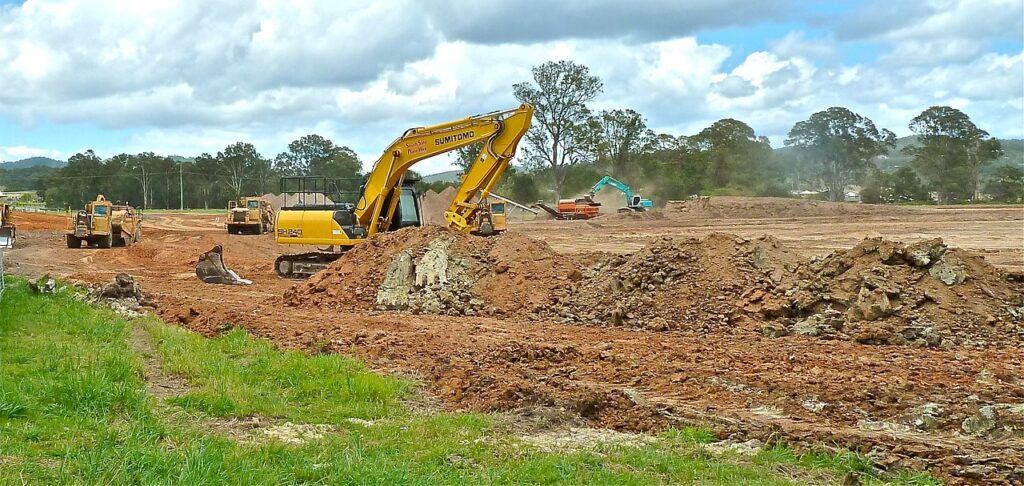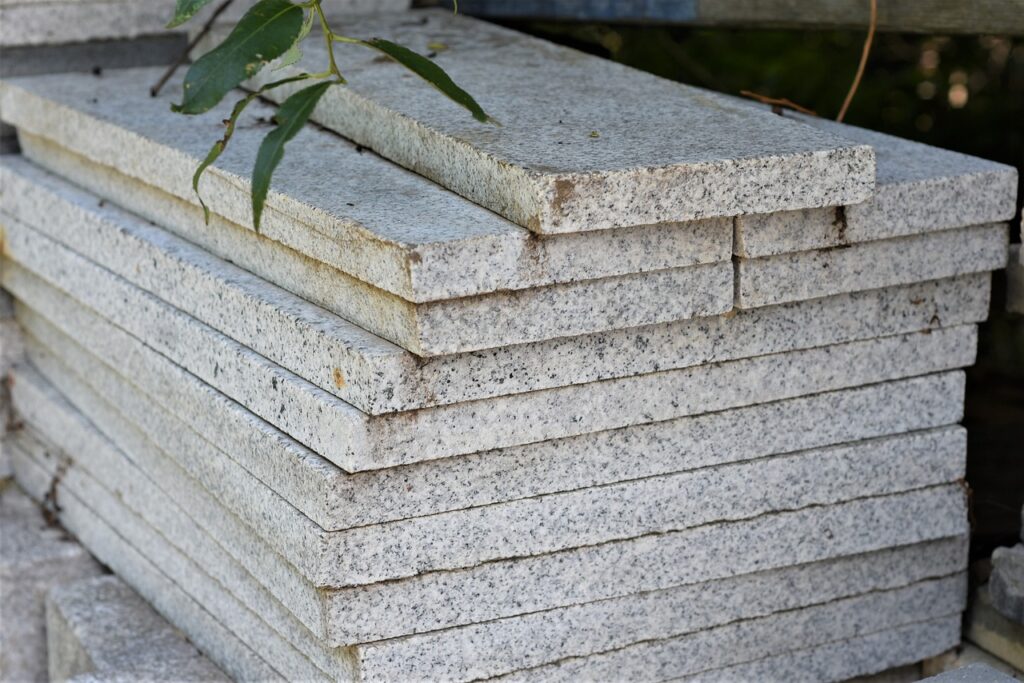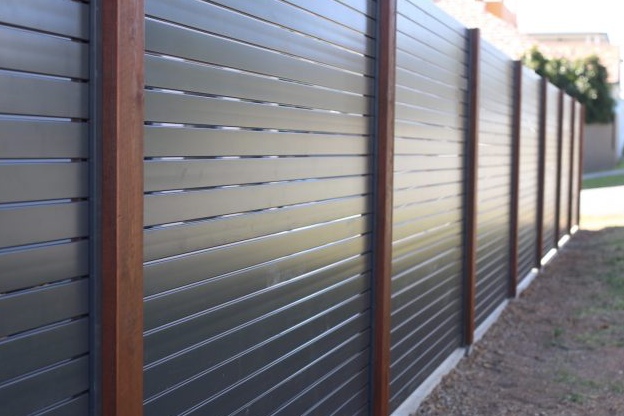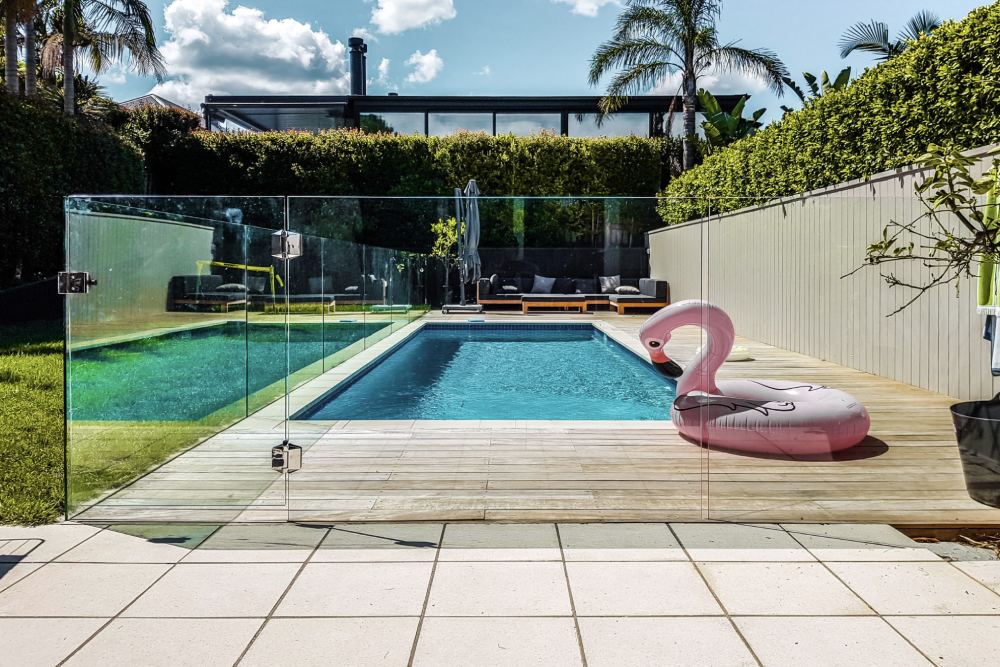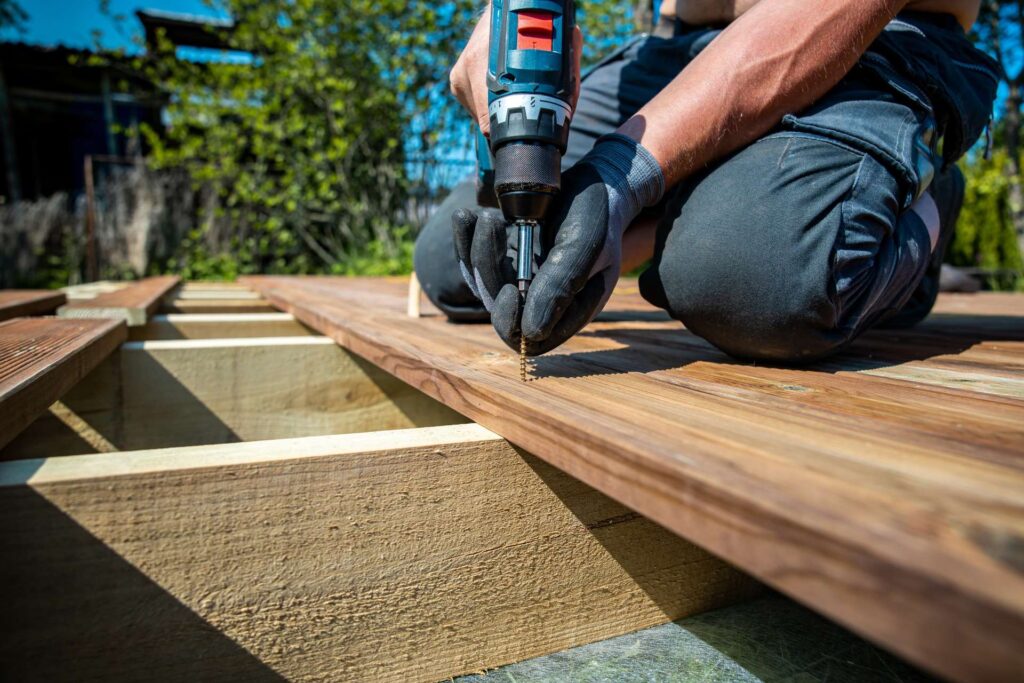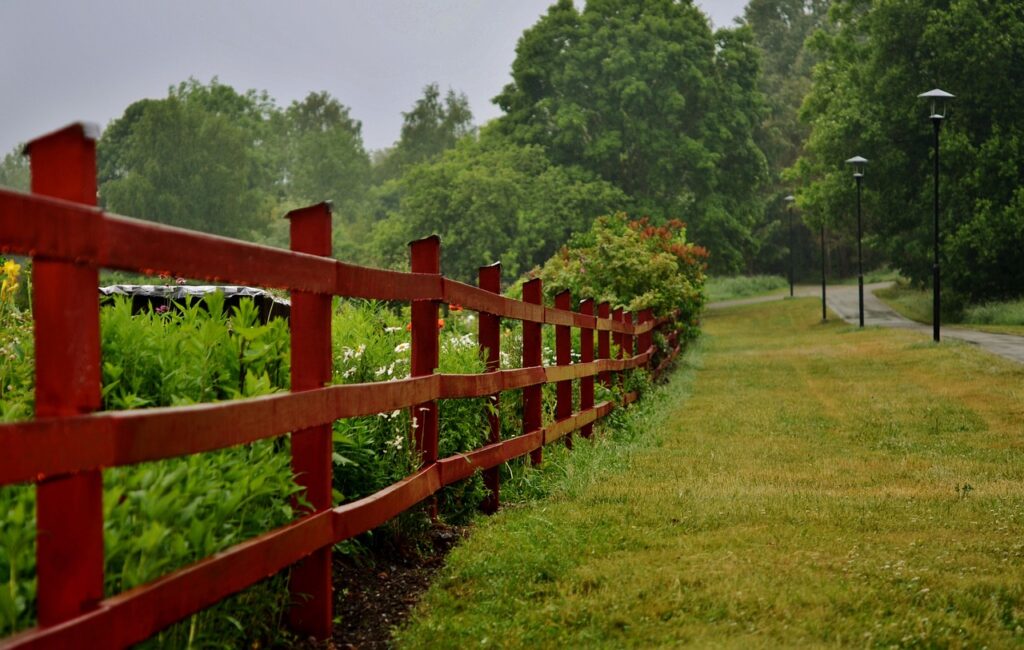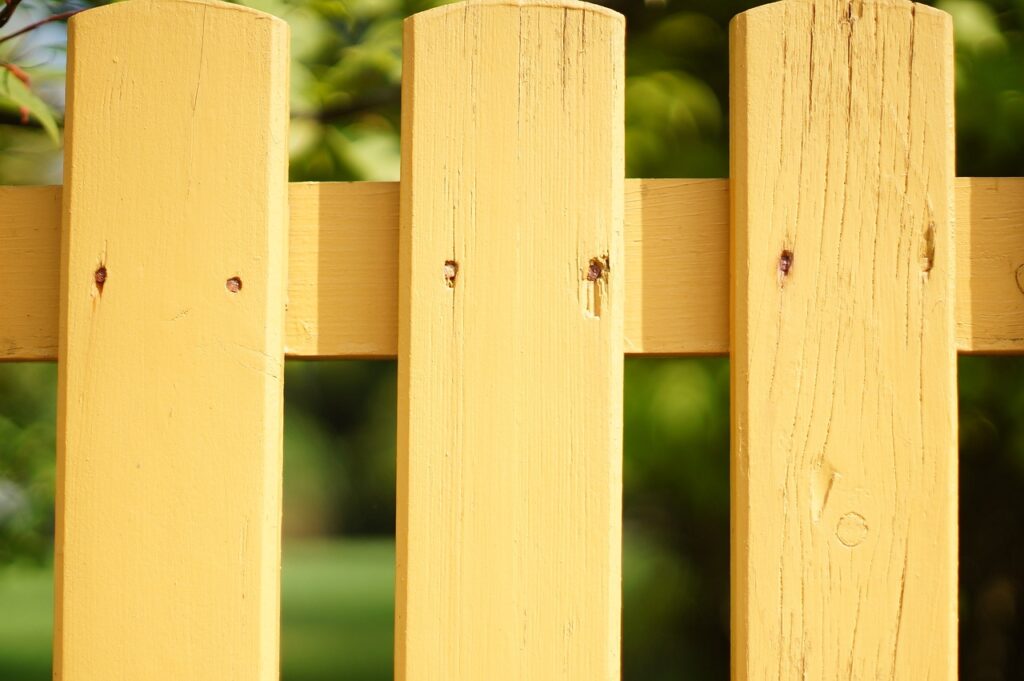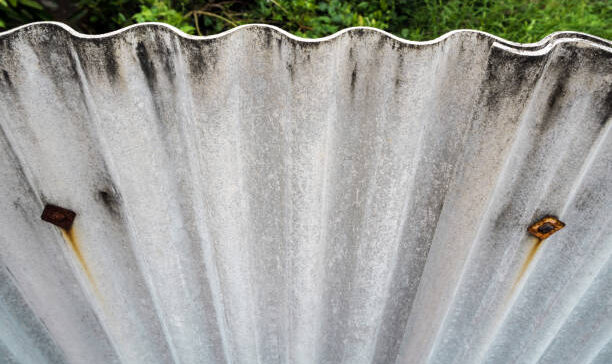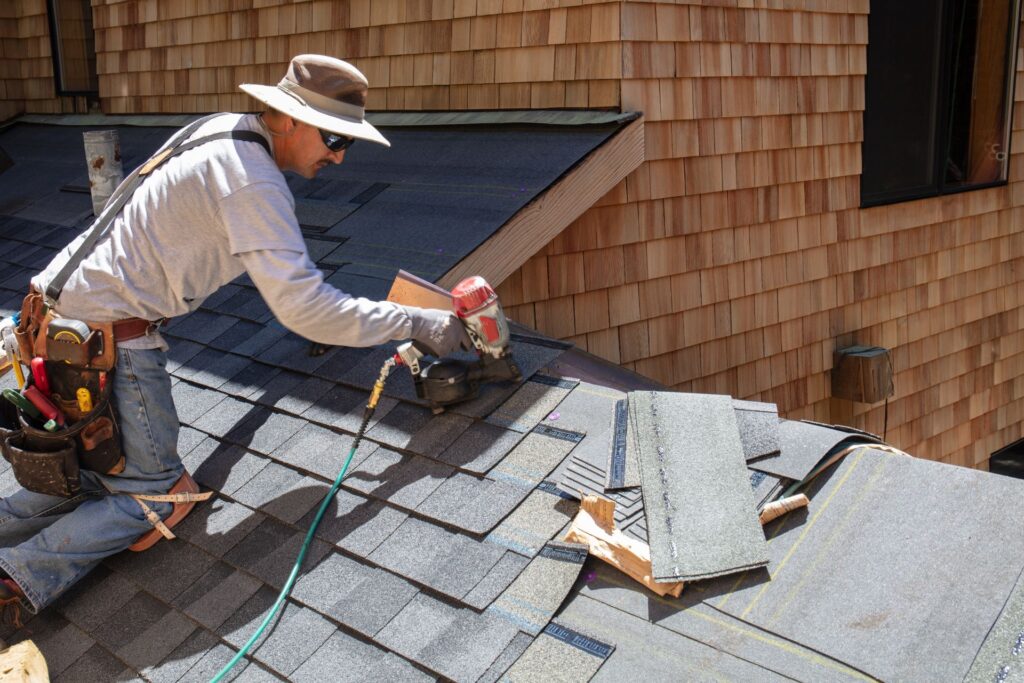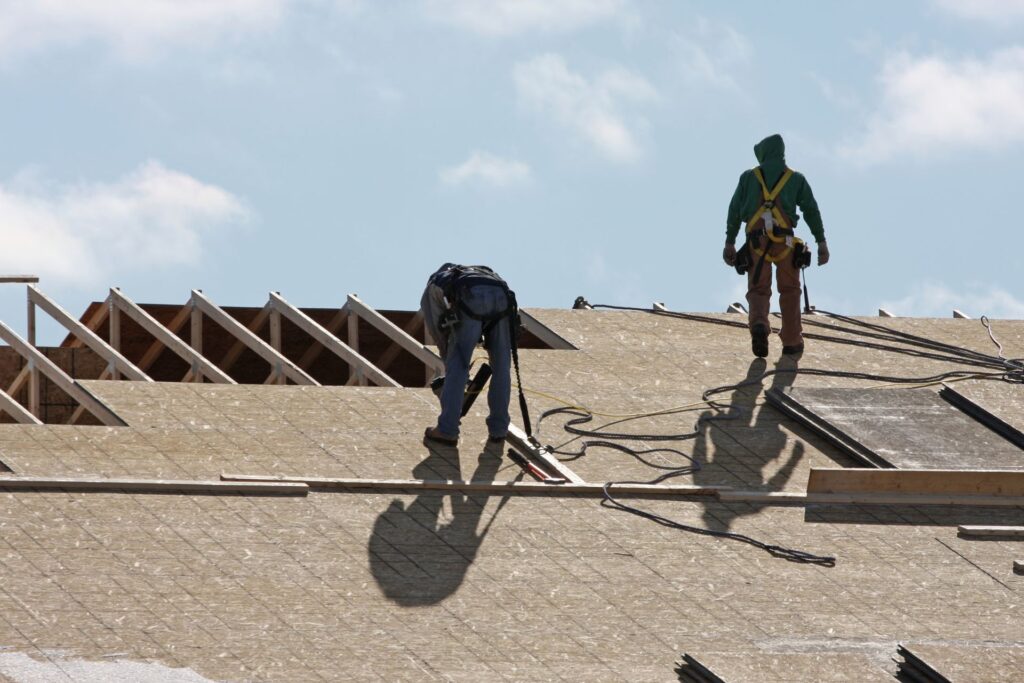Welcome to our comprehensive guide on cladding costs per square meter in New Zealand, where we break down everything you need to know to make informed decisions for your home construction or renovation project. Whether you’re building a new house or upgrading an existing one, cladding plays a crucial role in protecting your home from the elements and enhancing its aesthetic appeal and value. In this guide, we’ll walk you through the various factors that influence cladding costs, explore the pros and cons of different materials, and provide practical tips to help you budget effectively. By the end, you’ll clearly understand what to expect when it comes to cladding your home in NZ.
On average, cladding costs per square meter in New Zealand range from $150 to $400, depending on the material used, with timber and vinyl at the lower end and brick and metal at the higher end. Factors such as labor, building design, and location also influence the total cost.
- What Is Cladding And Why Is It Important
- Factors Influencing Cladding Costs In NZ
- Cladding Cost Breakdown By Material (Per Square Meter)
- Hidden Costs To Consider
- Tips For Budgeting And Reducing Cladding Costs
- Common Mistakes To Avoid When Budgeting For Cladding
- Case Studies: Real-Life Examples Of Cladding Costs In NZ
- Example 1: Breakdown of Costs for a Typical Single-Storey Home in Auckland Using Timber Cladding
- Example 2: Cost Comparison for a Multi-Storey Home in Wellington Using Brick Veneer vs. Fiber Cement
- Example 3: A Budget-Friendly Renovation Using Vinyl Cladding in Christchurch
- Visual Aids: Infographics and Charts for Enhanced Understanding
- FAQs: About The Cladding Costs Per Square Meter NZ
- Conclusion
- Find A Professional Cladding Company Near You!
What Is Cladding And Why Is It Important
Understanding Cladding in Simple Terms
Cladding refers to the application of one material over another to provide a protective layer or improve the appearance of a building. Think of it as a protective skin or outer shell for your home. This exterior layer is designed to shield the structure beneath from the elements, while also enhancing its visual appeal. It’s not just about making a building look good; cladding plays a crucial role in protecting your home from environmental factors like wind, rain, and sunlight.
Why is Cladding Important?
Cladding is essential for several reasons, all of which contribute to the longevity, efficiency, and overall value of your property.
Protection Against Weather Elements
One of the primary functions of cladding is to protect your home from harsh weather conditions. New Zealand’s climate can be unpredictable, with heavy rains, strong winds, and intense UV rays being common. Cladding acts as a barrier, preventing water infiltration, reducing the impact of wind, and protecting the building’s structure from sun damage. Without proper cladding, your home’s structural integrity could be compromised over time, leading to costly repairs.
Insulation Benefits
Beyond protection, cladding also plays a significant role in insulating your home. It provides thermal insulation, helping to keep your home warm in the winter and cool in the summer. This can lead to significant energy savings, as your heating and cooling systems won’t have to work as hard to maintain a comfortable indoor temperature. Additionally, cladding can offer acoustic insulation, reducing the amount of noise that enters or exits your home. This is particularly beneficial in urban areas or near busy roads, where noise pollution can be a concern.
Aesthetic Appeal
Cladding isn’t just functional; it’s also an important aspect of your home’s appearance. The right cladding can enhance the curb appeal of your property, making it more attractive and potentially increasing its value. Whether you prefer the natural look of timber, the classic appeal of brick, or the modern feel of metal or vinyl, there are cladding options to suit every style and taste. The aesthetic appeal of cladding can make your home stand out in the neighborhood, making it more appealing to potential buyers if you ever decide to sell.
Common Cladding Materials in New Zealand
In New Zealand, a variety of cladding materials are popular, each offering unique benefits and aesthetic qualities:
- Timber: A traditional and natural choice, timber cladding is known for its warmth and character. It’s a sustainable option that can blend seamlessly with the natural landscape.
- Brick: Brick cladding offers durability and a timeless look. It’s known for its low maintenance and excellent thermal properties, making it a popular choice for many homeowners.
- Vinyl: Vinyl cladding is a cost-effective and versatile option. It’s available in a wide range of colors and styles, offering great flexibility in design.
- Metal: Metal cladding, often made from steel or aluminum, provides a sleek, modern look. It’s durable, lightweight, and resistant to weathering, making it ideal for New Zealand’s varying climate.
- Fiber Cement: Fiber cement cladding combines the best of both worlds durability and aesthetic flexibility. It can mimic the appearance of wood, brick, or stone while being highly resistant to fire, moisture, and pests.
In conclusion, cladding is a vital component of any building in New Zealand, providing essential protection, insulation, and aesthetic appeal. By choosing the right cladding material, you can enhance the durability, energy efficiency, and overall value of your home.

Factors Influencing Cladding Costs In NZ
When planning a cladding project in New Zealand, it’s essential to understand the various factors that can influence the overall cost. From the type of material you choose to the complexity of your building’s design, several key elements can significantly impact your budget. Here’s a detailed look at these factors to help you make an informed decision.
Material Type
The material you select for cladding plays a significant role in determining the overall cost. Different materials come with their price ranges, durability, and aesthetic appeal, making it crucial to choose the one that best suits your needs and budget.
- Timber: Timber cladding is popular for its natural appearance and versatility. However, it tends to be more expensive, with costs typically ranging between $200 and $400 per square meter, depending on the type of wood.
- Brick: Brick cladding is known for its durability and classic look, with prices usually falling between $150 and $250 per square meter. While it may require a higher upfront investment, its longevity can offer long-term savings.
- Fiber Cement: Fiber cement is a cost-effective and durable option, with costs generally ranging from $100 to $200 per square meter. It’s resistant to weather and pests, making it a practical choice for many homeowners.
- Vinyl: Vinyl cladding is one of the most affordable options, with prices typically between $80 and $160 per square meter. It’s lightweight, easy to install, and comes in various colors and styles.
- Metal: Metal cladding, often made from steel or aluminum, offers a sleek and modern look, with costs varying between $150 and $300 per square meter. It’s known for its durability and low maintenance requirements.
Labor Costs
Labor costs are another critical factor that can vary widely depending on the region in New Zealand where your property is located. In larger cities like Auckland or Wellington, labor rates tend to be higher due to the increased cost of living and demand for skilled workers. In contrast, rural areas might offer lower labor rates, but the availability of experienced professionals may be limited.
Hiring skilled and experienced professionals is crucial to ensure the job is done correctly. Poor installation can lead to costly repairs down the line, making it worth investing in a qualified team to get the job done right the first time.
Building Design and Complexity
The design and complexity of your building can greatly affect cladding costs. Simpler designs, such as single-story homes with straightforward shapes, are generally easier and less expensive to clad. On the other hand, multi-story buildings or those with intricate architectural details, such as curves, angles, or overhangs, require more time and expertise, driving up labor and material costs.
When planning your cladding project, consider how the design of your building will impact both the cost and the timeline of the installation.
Site Accessibility
The location of your property and the ease with which workers and materials can access the site are other factors that can influence costs. Properties in remote areas or those with difficult access, such as steep slopes or limited road access, can increase transportation and labor costs. Additionally, if specialized equipment is required to reach certain areas of your property, this can further add to the overall expense.
Ensuring that your site is easily accessible can help keep costs down and streamline the installation process.
Permits and Regulations
Finally, it’s essential to consider any permits or regulations that may apply to your cladding project. Depending on your location, especially if your property is in a heritage area or subject to specific local council regulations, you may need to obtain permits before proceeding with the work. These permits can add to the overall cost and may also affect the types of materials you are allowed to use.
In conclusion, understanding the various factors that influence cladding costs in New Zealand can help you plan your project more effectively. By considering material types, labor costs, building design, site accessibility, and any necessary permits, you can make informed decisions that align with your budget and project goals.

Cladding Cost Breakdown By Material (Per Square Meter)
When considering the exterior cladding for your home or building, the choice of material is crucial. It not only affects the aesthetic appeal but also influences the overall cost, durability, and maintenance requirements. Below is a detailed breakdown of various cladding materials, highlighting their pros and cons along with the average cost per square meter.
Timber Cladding
Pros
Timber cladding is renowned for its natural beauty and warmth, giving any structure a timeless, rustic appeal. It’s an environmentally friendly option, particularly if sourced from sustainable forests. Timber is also a good insulator, helping to maintain a stable internal temperature.
Cons
However, timber cladding requires regular maintenance to protect it from moisture, insects, and UV damage. Without proper care, timber can warp, crack, or rot over time. It’s also less fire-resistant compared to other materials, which could be a concern in certain regions.
Average Cost
The cost of timber cladding typically ranges from $120 to $350 per square meter. The wide range is due to the type of wood used, with hardwoods being more expensive than softwoods.
Brick Veneer
Benefits
Brick veneer is a popular choice for its classic look and exceptional durability. It offers excellent thermal mass, helping to regulate the temperature inside the building. Brick is also fire-resistant, low-maintenance, and resistant to pests and rot.
Challenges
The main drawback of brick veneer is its weight, which requires a sturdy foundation and can add to the overall construction cost. Additionally, installation can be labor-intensive, and the material itself is more expensive than some other cladding options.
Average Cost
You can expect to pay between $150 and $350 per square meter for brick veneer. The cost varies depending on the type of brick and the complexity of the installation.
Fiber Cement
Why Popular in NZ
Fiber cement cladding has gained popularity in New Zealand due to its versatility and resilience in the country’s diverse climate. It’s made from a mix of cement, sand, and cellulose fibers, resulting in a material that is both strong and lightweight. Fiber cement is also resistant to moisture, fire, and pests, making it a reliable choice for long-term performance.
Average Cost
Fiber cement cladding is relatively affordable, with prices typically ranging from $100 to $250 per square meter. The cost is influenced by the brand, thickness, and style of the panels.
Vinyl Cladding
Advantages
Vinyl cladding is a cost-effective option, popular for its low maintenance and ease of installation. It’s available in a wide range of colors and styles, making it easy to customize the appearance of your home. Vinyl is also resistant to moisture and insects, and it doesn’t require painting or staining.
Cost-Effectiveness
One of the biggest advantages of vinyl cladding is its affordability. It’s one of the most budget-friendly cladding materials available, with costs typically ranging from $60 to $150 per square meter.
Metal Cladding
Durability and Modern Appeal
Metal cladding is known for its durability and sleek, modern look. It’s highly resistant to weathering, fire, and pests, making it a long-lasting option for both residential and commercial buildings. Metal cladding can be made from various metals, including aluminum, steel, and zinc, each offering different aesthetic and performance characteristics.
Average Cost
The cost of metal cladding varies depending on the type of metal and the finish, but generally, it ranges from $150 to $300 per square meter. While it’s on the higher end of the price spectrum, the longevity and minimal maintenance requirements can make it a cost-effective choice over time.
By understanding the pros, cons, and costs associated with each cladding material, you can make an informed decision that aligns with your budget, design preferences, and long-term maintenance considerations. Whether you prioritize aesthetics, durability, or cost, there’s a cladding option to suit your needs.

Hidden Costs To Consider
When planning a cladding project, it’s easy to focus solely on the upfront costs of materials and installation. However, several hidden expenses can significantly impact your budget over time. Understanding these hidden costs can help you make more informed decisions and avoid unexpected financial surprises.
Insulation Requirements
One of the often overlooked aspects of choosing cladding is how it interacts with your building’s insulation. Some cladding materials, particularly those with lower thermal performance, may require additional insulation to meet energy efficiency standards. This can add to your overall project cost. For example, if you opt for metal cladding, you might need to invest in high-performance insulation to prevent heat loss, which could lead to increased energy bills if not properly addressed. It’s important to factor in these insulation needs during the planning phase to avoid unforeseen expenses down the line.
Maintenance Costs
The long-term maintenance of your cladding material is another critical factor to consider. While some materials, like vinyl or fiber cement, are relatively low-maintenance, others, such as wood or metal, may require regular upkeep to maintain their appearance and performance. Wood cladding, for example, might need periodic painting or staining to protect it from weather damage, which can add up in terms of both time and money. On the other hand, metal cladding might require occasional treatment to prevent rust or corrosion, especially in areas with harsh climates. Understanding these maintenance requirements can help you choose a material that aligns with your budget and maintenance capacity over time.
Replacement or Repairs
No cladding material lasts forever, and the potential costs for future repairs or replacements are important to consider. The lifespan of cladding materials varies widely while stone or brick can last for decades with minimal issues, materials like vinyl or wood may need replacement sooner. Additionally, some materials are more prone to damage from environmental factors, such as strong winds, moisture, or UV exposure, which can accelerate the need for repairs. Factoring in the expected lifespan and durability of your chosen cladding material can help you budget for future costs and decide whether the initial savings are worth potential future expenses.
Waste Disposal
Another hidden cost that can catch you off guard is the expense associated with waste disposal. Removing old cladding or disposing of construction waste can be more costly than anticipated, particularly if your project involves hazardous materials like asbestos, which require special handling and disposal methods. Even if hazardous materials are not involved, the volume of waste generated by a cladding project can still result in significant disposal fees. Proper budgeting for waste disposal is essential to avoid unexpected costs at the end of your project. Additionally, considering eco-friendly options or recycling programs might not only reduce waste but also lower your disposal costs.
By carefully considering these hidden costs insulation requirements, maintenance, potential repairs, and waste disposal you can better prepare for the true cost of your cladding project. Taking these factors into account will help ensure your project stays within budget and meets your long-term needs without compromising on quality or performance.

Tips For Budgeting And Reducing Cladding Costs
When planning a cladding project, managing costs effectively is crucial to ensure you stay within your budget without sacrificing quality or aesthetics. Here are some practical tips to help you budget wisely and reduce cladding costs.
Choosing the Right Material for Your Budget
Selecting the right cladding material is one of the most significant decisions you’ll make, and it plays a major role in your overall project cost. While it’s tempting to choose the most affordable option, it’s essential to balance cost, durability, and aesthetics.
For example, vinyl cladding is typically less expensive and easy to maintain, making it a popular choice for budget-conscious homeowners. However, it may not offer the same level of durability as fiber cement or metal cladding. On the other hand, high-end materials like stone or brick may require a larger upfront investment but can provide long-term benefits through their durability and minimal maintenance needs. When choosing materials, consider not just the initial cost but also how long the cladding will last and what kind of maintenance it will require.
Getting Multiple Quotes
One of the most effective ways to ensure you’re getting the best deal on your cladding project is to obtain multiple quotes from different contractors. This approach not only helps you understand the market rates but also gives you the leverage to negotiate better prices.
When requesting quotes, be specific about the materials, the scope of work, and any other requirements. Ensure that each quote includes a detailed breakdown of costs so you can make an accurate comparison. Remember, the cheapest quote isn’t always the best option. Consider the contractor’s reputation, experience, and the quality of materials they are offering before making a decision.
DIY vs. Hiring Professionals
Deciding whether to tackle the cladding installation yourself or hire professionals is another critical consideration. DIY cladding can save you money on labor costs, making it an attractive option for those on a tight budget. However, it’s important to assess your skill level and the complexity of the project.
For simpler projects, or if you have previous experience with home improvement tasks, DIY could be a viable option. There are plenty of resources available, including online tutorials and guides, to help you through the process. On the other hand, professional installation can ensure a higher-quality finish, particularly for complex projects or when using more challenging materials. Hiring professionals might be more expensive upfront, but it could save you money in the long run by avoiding potential mistakes and ensuring the longevity of the installation.
Timing Your Purchase
The timing of your cladding purchase can also impact the overall cost. Like many building materials, cladding prices can fluctuate based on demand and seasonal factors. For instance, purchasing materials during off-peak seasons when demand is lower may allow you to take advantage of discounts or promotions.
Additionally, keeping an eye on market trends and being flexible with your project timeline can help you make more cost-effective decisions. If you’re not in a rush, consider delaying your purchase until you find a good deal or when prices drop. Also, buying in bulk can sometimes result in additional savings, so plan your project thoroughly to avoid the need for last-minute purchases at higher prices.
By following these tips, you can effectively manage your cladding project’s budget while still achieving the look and durability you desire. Balancing cost, quality, and timing will help you make informed decisions and reduce unnecessary expenses, ensuring that your investment in cladding adds value to your home without breaking the bank.

Common Mistakes To Avoid When Budgeting For Cladding
When budgeting for cladding, many homeowners and builders tend to make avoidable mistakes that can lead to significant issues down the line. Understanding these pitfalls can help ensure that your cladding project stays within budget while delivering the durability and aesthetic appeal you expect. Here are some of the most common mistakes to avoid:
Underestimating the Total Cost
One of the most frequent mistakes people make is underestimating the overall cost of cladding. It’s easy to focus on the price of materials while overlooking hidden expenses such as labor, waste disposal, and potential repairs or reinforcements needed before installation. Additionally, unexpected costs can arise during the project, such as the need for extra materials due to miscalculations or unforeseen complications during installation. These costs can quickly add up, causing your budget to spiral out of control. It’s crucial to plan for contingencies and include a buffer in your budget to cover these unforeseen expenses.
Compromising on Quality for Cost
While it might be tempting to cut costs by opting for cheaper materials, this approach can backfire in the long run. Lower-quality materials may save you money upfront, but they often lack the durability and resilience needed to withstand the test of time, especially in regions with challenging weather conditions. Poor-quality cladding can lead to higher maintenance costs, more frequent repairs, and even the need for a complete replacement sooner than expected. Investing in high-quality materials might seem expensive initially, but it often proves to be more cost-effective over the lifespan of your home by reducing maintenance costs and enhancing overall durability.
Ignoring Local Climate Considerations
Another critical mistake is failing to consider the local climate when choosing cladding materials. New Zealand’s diverse climate conditions, ranging from coastal humidity to alpine chill, demand materials that can withstand specific environmental challenges. For instance, some materials may warp or deteriorate faster in wet, coastal areas, while others might not provide sufficient insulation in colder regions. Selecting cladding that is not suited to your local climate can lead to significant problems, including structural damage, increased energy costs, and a shorter lifespan for your cladding. It’s essential to choose materials that are designed to handle the specific weather patterns and environmental factors in your area to ensure long-term performance and protection.
Avoiding these common mistakes when budgeting for cladding can save you from unnecessary expenses and headaches down the road. By accurately estimating the total costs, investing in quality materials, and considering your local climate, you can ensure that your cladding project is successful, durable, and within budget. Take the time to plan carefully, and your investment in cladding will pay off in both the short and long term.

Case Studies: Real-Life Examples Of Cladding Costs In NZ
When it comes to choosing cladding for your home in New Zealand, understanding real-life costs can be incredibly valuable. This section delves into three specific case studies from different parts of the country, offering a clear picture of what you might expect to pay for various cladding options. These examples provide insights into the financial implications of your cladding choices, whether you’re building new or renovating. Let’s take a closer look at these case studies, which include detailed breakdowns and comparisons to help you make an informed decision.
Example 1: Breakdown of Costs for a Typical Single-Storey Home in Auckland Using Timber Cladding
In Auckland, timber cladding is a popular choice for single-storey homes due to its natural appearance and durability. This case study explores the costs associated with using timber cladding on a standard single-story home.
- Material Costs: Timber cladding typically ranges from $140 to $220 per square meter, depending on the type of wood used. For a 150-square-meter home, this equates to material costs of $21,000 to $33,000.
- Installation Costs: Installing timber cladding generally costs between $60 to $100 per square meter. This means installation could add another $9,000 to $15,000 to the overall cost.
- Total Estimated Cost: When you combine material and installation costs, the total for cladding a single-story home in Auckland with timber could range from $30,000 to $48,000.
This example highlights that while timber cladding offers a beautiful and sustainable option, it does come with a significant price tag, especially when considering the long-term maintenance that wood may require.
Example 2: Cost Comparison for a Multi-Storey Home in Wellington Using Brick Veneer vs. Fiber Cement
Wellington’s challenging weather conditions make choosing the right cladding material crucial. This case study compares the costs of using brick veneer and fiber cement for a multi-story home.
- Brick Veneer Costs: Brick veneer is known for its durability and classic appearance, with costs ranging from $190 to $280 per square meter. For a 200-square-meter home, the material cost could be between $38,000 and $56,000. Installation adds another $80 to $120 per square meter, totaling $16,000 to $24,000. Overall, brick veneer cladding could cost between $54,000 and $80,000.
- Fiber Cement Costs: Fiber cement is a versatile and affordable option, with materials costing between $100 and $150 per square meter. For the same 200-square-meter home, this would be $20,000 to $30,000. Installation is typically cheaper as well, ranging from $50 to $80 per square meter, adding another $10,000 to $16,000. The total cost for fiber cement cladding would range from $30,000 to $46,000.
This comparison shows that while brick veneer offers greater durability, fiber cement provides a more cost-effective solution, making it an attractive option for homeowners looking to balance aesthetics with budget.
Example 3: A Budget-Friendly Renovation Using Vinyl Cladding in Christchurch
Christchurch homeowners often seek budget-friendly solutions for renovations, particularly after the earthquakes that increased demand for affordable housing solutions. Vinyl cladding is one such option that combines low cost with durability.
- Material Costs: Vinyl cladding is one of the most economical choices, with materials costing between $50 and $100 per square meter. For a 100-square-meter renovation, the material costs would range from $5,000 to $10,000.
- Installation Costs: Installation of vinyl cladding is straightforward and generally costs between $30 to $50 per square meter, adding $3,000 to $5,000 to the total cost.
- Total Estimated Cost: The overall cost for a budget-friendly renovation using vinyl cladding in Christchurch would range from $8,000 to $15,000.
This example demonstrates that vinyl cladding is a highly cost-effective option for those looking to renovate on a budget, without compromising on durability or ease of maintenance.
Visual Aids: Infographics and Charts for Enhanced Understanding
To further aid in your decision-making process, consider reviewing infographics or charts that visually compare these costs. Such visual aids can simplify the complex information presented, allowing for a quick comparison between the different cladding options and their associated costs across New Zealand’s major cities.
By examining these case studies, homeowners and builders alike can better understand the potential costs of cladding, helping them choose the right materials and stay within budget. Whether prioritizing aesthetics, durability, or cost, these real-life examples provide a clear guide to making informed decisions in the New Zealand housing market.

FAQs: About The Cladding Costs Per Square Meter NZ
Conclusion
Understanding cladding costs and considerations is essential for anyone looking to enhance their home’s exterior. This guide has provided an in-depth look at the key factors influencing cladding expenses, including material choices, installation complexity, and long-term maintenance. With this knowledge, homeowners are better equipped to make informed decisions that suit both their budget and aesthetic preferences. As you evaluate your own cladding needs, don’t hesitate to seek professional advice to ensure the best outcome for your project. For tailored guidance, consider reaching out to local experts for a detailed quote or explore our related posts on home renovation for more insights.
Find A Professional Cladding Company Near You!
Cladding Paihia
Cladding Kerikeri
Cladding Waikato
About the Author:
Mike Veail is a recognized digital marketing expert with over 6 years of experience in helping tradespeople and small businesses thrive online. A former quantity surveyor, Mike combines deep industry knowledge with hands-on expertise in SEO and Google Ads. His marketing strategies are tailored to the specific needs of the trades sector, helping businesses increase visibility and generate more leads through proven, ethical methods.
Mike has successfully partnered with numerous companies, establishing a track record of delivering measurable results. His work has been featured across various platforms that showcase his expertise in lead generation and online marketing for the trades sector.
Learn more about Mike's experience and services at https://theleadguy.online or follow him on social media:





